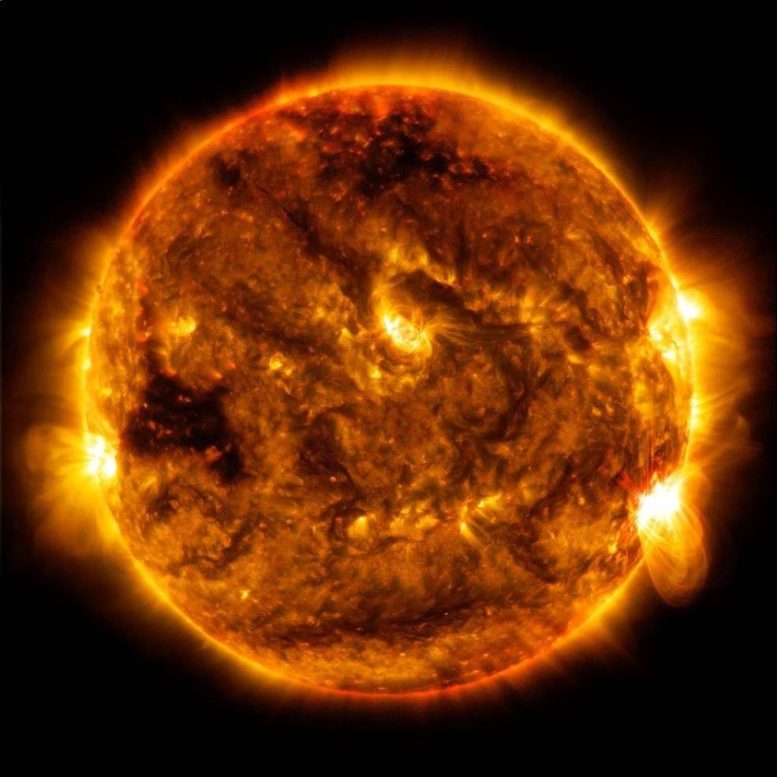
A mid-level solar flare that peaked at 8:13 p.m. EDT on October 1, 2015, captured by NASA’s Solar Dynamics Observatory. Credit: NASA/SDO
NASA has selected two science missions – the Multi-slit Solar Explorer (MUSE) and HelioSwarm – to help improve our understanding of the dynamics of the Sun, the Sun-Earth connection, and the constantly changing space environment. These missions will reveal deeper insights into our universe and offer critical information to help protect astronauts, satellites, and communications signals like GPS.
“MUSE and HelioSwarm will provide new and deeper insight into the solar atmosphere and space weather,” said Thomas Zurbuchen, associate administrator for science at NASA Headquarters in Washington. “These missions not only extend the science of our other heliophysics missions—they also provide a unique perspective and a novel approach to understanding the mysteries of our star.”
MUSE
The MUSE mission will help scientists understand the forces driving the heating of the Sun’s corona and the eruptions in that outermost region that are at the foundation of space weather. The mission will offer deeper insight into the physics of the solar atmosphere by using a powerful instrument known as a multi-slit spectrometer to observe the Sun’s extreme ultraviolet radiation and obtain the highest resolution images ever captured of the solar transition region and the corona.
The mission will also provide complementary observations from heliophysics research such as the Extreme UltraViolet Spectroscopic Telescope and ground-based observatories.
“MUSE will help us fill crucial gaps in knowledge pertaining to the Sun-Earth connection,” said Nicola Fox, director of the Heliophysics Division at NASA Headquarters. “It will provide more insight into space weather and complements a host of other missions within the heliophysics mission fleet.”
The primary goal of the MUSE mission is to investigate the causes of coronal heating and instability, such as flares and coronal mass ejections, and gain insight into the basic plasma properties of the corona. MUSE will obtain high-resolution images of the evolution of solar flare ribbons in a field of view focused on a large, active region on the Sun.
The principal investigator for the MUSE mission is Bart DePontieu of the Lockheed Martin Advanced Technology Center (LMATC) of Palo Alto, California. This mission has a budget of $192 million. LMATC will provide project management.
HelioSwarm
The HelioSwarm mission is a constellation or “swarm” of nine spacecraft that will capture the first multiscale in-space measurements of fluctuations in the magnetic field and motions of the solar wind known as solar wind turbulence. The Sun’s outermost atmospheric layer, the heliosphere, encompasses an enormous region of the solar system. Solar winds spread through the heliosphere, and their interactions with planetary magnetospheres and disruptions such as coronal mass ejections affect their turbulence.
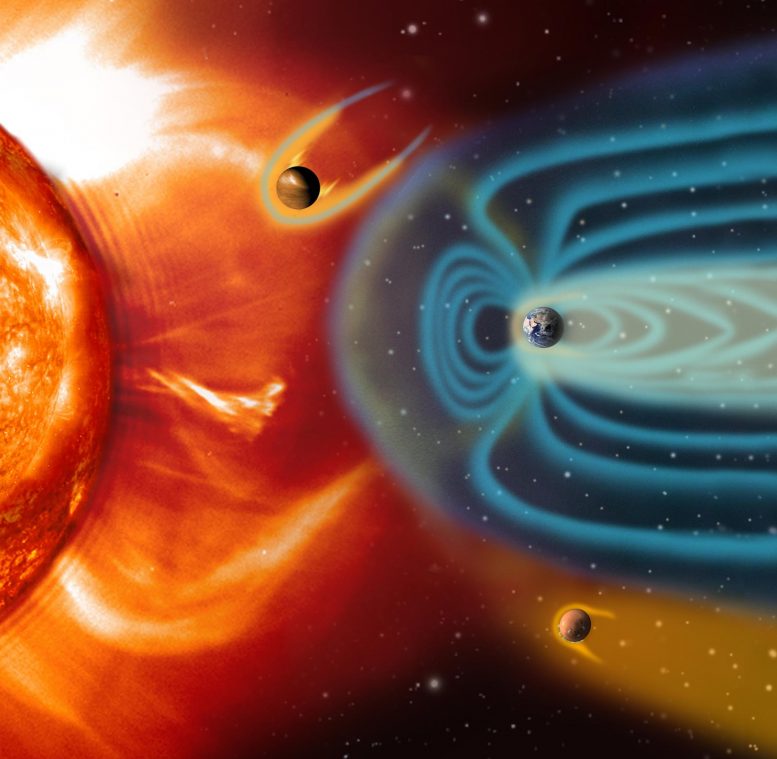
Artist impression (not to scale) illustrates how the solar wind shapes the magnetospheres of Venus (top), Earth (middle), and Mars (bottom). Credit: ESA
Studying solar wind turbulence across large areas requires plasma measurements taken simultaneously from different points in space. HelioSwarm consists of one hub spacecraft and eight co-orbiting small satellites that range in distance from each other and the hub spacecraft. The hub spacecraft will maintain radio contact with each small satellite. All radio contact between the swarm and Earth will be conducted through the hub spacecraft and the NASA Deep Space Network of spacecraft communication antennas.
“The technical innovation of HelioSwarm’s small satellites operating together as a constellation provides the unique ability to investigate turbulence and its evolution in the solar wind,” said Peg Luce, deputy director of the Heliophysics Division.
The HelioSwarm mission’s principal investigator is Harlan Spence from the University of New Hampshire. The mission’s budget is $250 million. NASA’s Ames Research Center in Silicon Valley, California, will provide project management.
Funding and management oversight for these missions is provided by the Heliophysics Explorers Program, managed by the Explorers Program Office at NASA’s Goddard Space Flight Center in Greenbelt, Maryland.

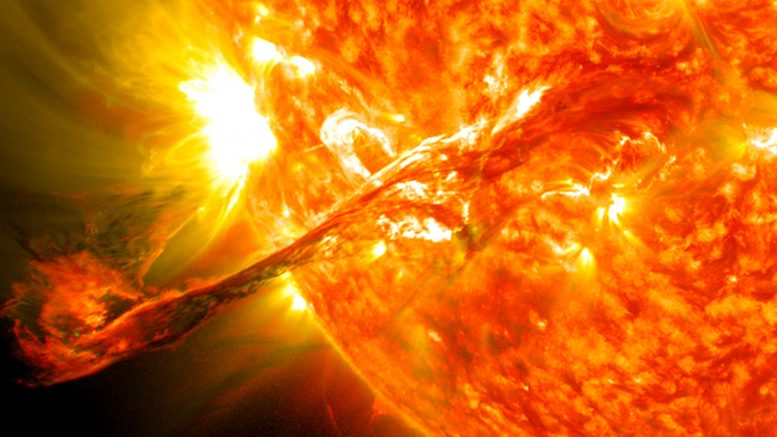


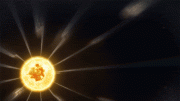
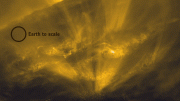
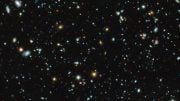
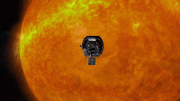
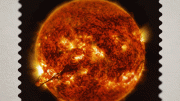
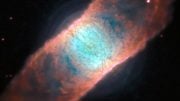
Notre Soleil est déjà entré dans son 25e cycle selon l’analyse scientifique, on pourrait récolter les plus informations sur ses activités pour mieux prévoir en cas de fortes radiations et les éruptions solaires trop intense, cela pourrait nous permettre de préparer de se protéger de désastres naturels ou de réchauffe climatique qui auraientt de lien avec notre Soleil en adoptant les activités humaines par rapport à la nature, et de comprendre aussi le bouclier magnétique terrestre qui nous protège jusqu’à présent. En 2023, il y aura l’inversement magnétique terrestre, on dirait.
That’s all unsupported pseudoscience.
And what mostly protects us is the atmosphere, with how much the geodynamo in turn protects it still an open area of study.
FWIW, here is what MUSE may contribute:
“MUSE’s multi-slit coronal spectroscopy will use a 100x improvement in spectral raster cadence to fill a crucial gap in our knowledge of Sun-Earth connections; it will reveal temperatures, velocities and non-thermal processes over a wide temperature range to diagnose physical processes that remain invisible to current or planned instruments.”
[“MUSE: the Multi-Slit Solar Explorer”, American Astronomical Society, SPD meeting #48, id.110.08, 2017]
More and newer detail here: https://arxiv.org/abs/1909.08818 .
Im in the time but you makes sense and jo is your responsibility to keep the best time arsham1054 kpr